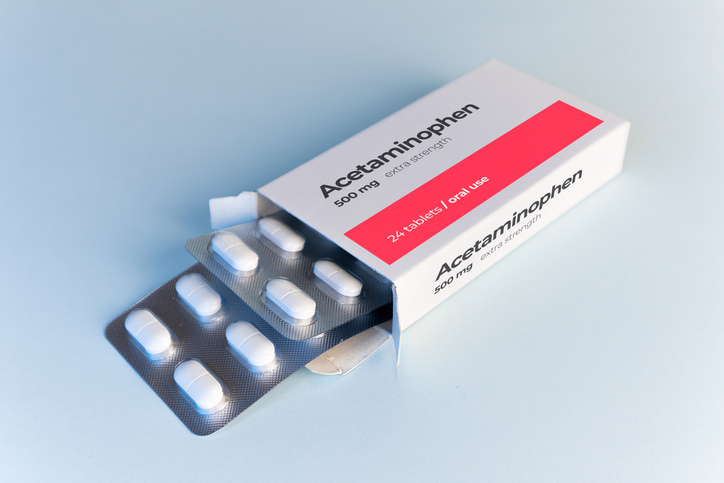
Black, Latinx, and Asian Patients with Rheumatic Disease Are More Likely to be Hospitalized for COVID-19
According to new research, minority patients with rheumatic disease and COVID-19 are more likely than white patients to be hospitalized. The study included data on 1,324 U.S. patients with rheumatic disease and COVID-19 who were included in the COVID-19 Global Rheumatology Alliance physician registry between March 24 and August 26. More than a third of the cohort (36%) were hospitalized, and 6% of patients died. Among the hospitalized patients, more than a quarter (26%) required mechanical ventilation. Upon multivariable analyses, compared to White patients, the odds of being hospitalized were greater for Black, Latinx, and Asian patients. Latinx patients, compared to White patients, were significantly more likely to require ventilatory support. The study authors did not observe a correlation between race/ethnicity and mortality, but they acknowledged that the study may not have powered to identify any potential correlations.
https://www.docwirenews.com/urban-health-today/urban-health-picks/black-latinx-and-asian-patients-with-rheumatic-disease-are-more-likely-to-be-hospitalized-for-covid-19/
Risankizumab Improves Outcomes for Patients with Psoriasis in Randomized Trials
The results of two randomized clinical trials found that risankizumab was associated with improved symptoms, mental health, and quality of life for patients with moderate to severe psoriasis. For both studies, patients were randomized 3:1:1 to 150 mg of risankizumab, 45 mg or 90 mg of ustekinumab for 52 weeks, or matching placebo for 16 weeks followed by risankizumab. At week 16, the risankizumab group had a higher proportion of patients achieve Psoriasis Symptom Scale 0—indicative of no symptoms of psoriasis—compared to the ustekinumab and placebo groups (30.3% vs. 15.1% vs. 1.0%), as well as a higher proportion of patients with Dermatology Life Quality Index 0 or 1—indicative of no impact on skin-related health-related quality of life—compared to the other groups (66.2% vs. 44.7% vs. 6.0%).
https://www.docwirenews.com/docwire-pick/rheumatology-picks/risankizumab-improves-outcomes-for-patients-with-psoriasis-in-randomized-trials/
Racial Diversity Is Still Lacking Among Prospective and Current Students in Surgery Programs
The percentage of applicants for and students currently enrolled in the majority of U.S. surgical programs who are racially/ethnically diverse and underrepresented in medicine did not significantly change over an eight-year period, according to a study. A total of 737,034 applicants and 265,365 matriculants to U.S. residency programs were identified, of whom 134,158 applicants and 41,347 matriculants were in surgical programs. Among the surgical group, 21,369 applicants (15.9%) and 5,704 matriculants (13.8%) were of a group underrepresented in medicine. From 2010 to 2018, the percentage of applicants to orthopedic surgery who were underrepresented in medicine did not significantly change (18.5% vs. 19.4%), but the percentage of matriculants did increase (9.0% vs. 12.4%).
https://www.docwirenews.com/urban-health-today/urban-health-picks/racial-diversity-is-still-lacking-among-prospective-and-current-students-in-surgery-programs/
Revision TKA Patients Are Getting Younger, But They’re More Likely to Need Re-Revision Surgery
More and more younger patients are undergoing total knee arthroplasty (TKA) and, as a result, revision TKA (rTKA). However, these younger patients may be more likely to require re-rTKA down the line compared to their traditional TKA-aged counterparts. “Advances in the field of joint replacement along with newer implant designs have encouraged surgeons to expand TKA to a younger age group,” explained senior study author James Keeney, MD, associate professor of orthopaedic surgery, in a press release. The younger cohort, compared to the traditional group, had a higher rate of initial aseptic rTKA within two years of the primary TKA (52.5% vs. 29.0%). Younger patients were more likely, after rTKA, to require early reoperation (17.7% vs. 9.7%) or component re-revision (11.4% vs. 6.0%); they also had higher rates of infection and extensor mechanism complications. Five-year survival estimates were poorer for younger patients in terms of reoperation (59.4% vs. 65.7%) and component re-revision or salvage (65.8% vs. 80.1%).
https://www.docwirenews.com/condition-center/orthopedicscc/orthopedics-center-picks/revision-tka-patients-are-getting-younger-but-theyre-more-likely-to-need-re-revision-surgery/







 © 2025 Mashup Media, LLC, a Formedics Property. All Rights Reserved.
© 2025 Mashup Media, LLC, a Formedics Property. All Rights Reserved.